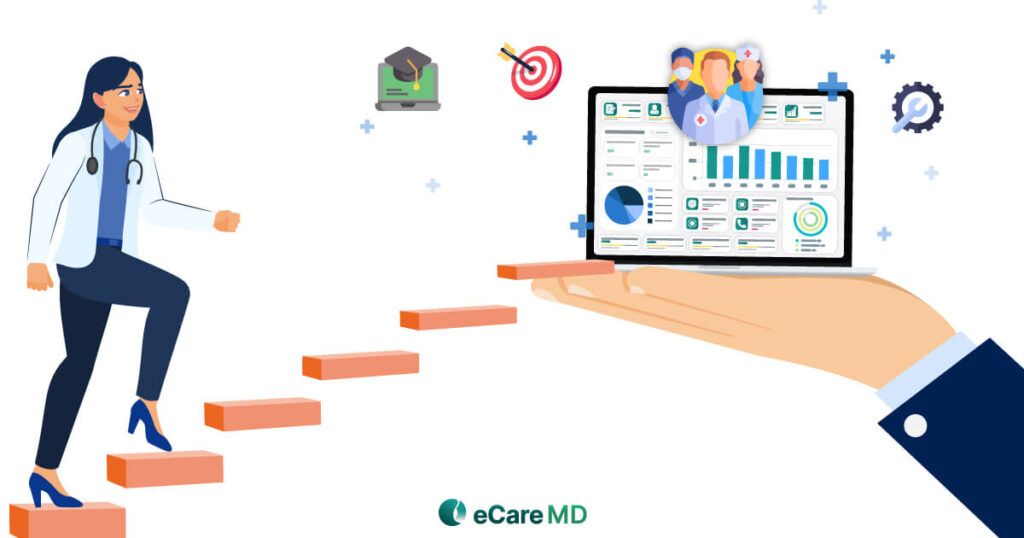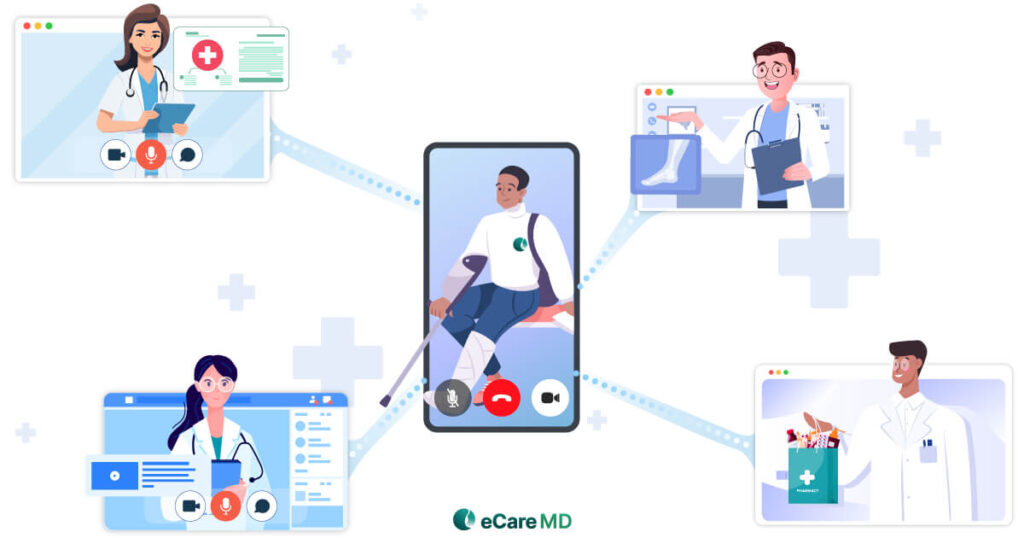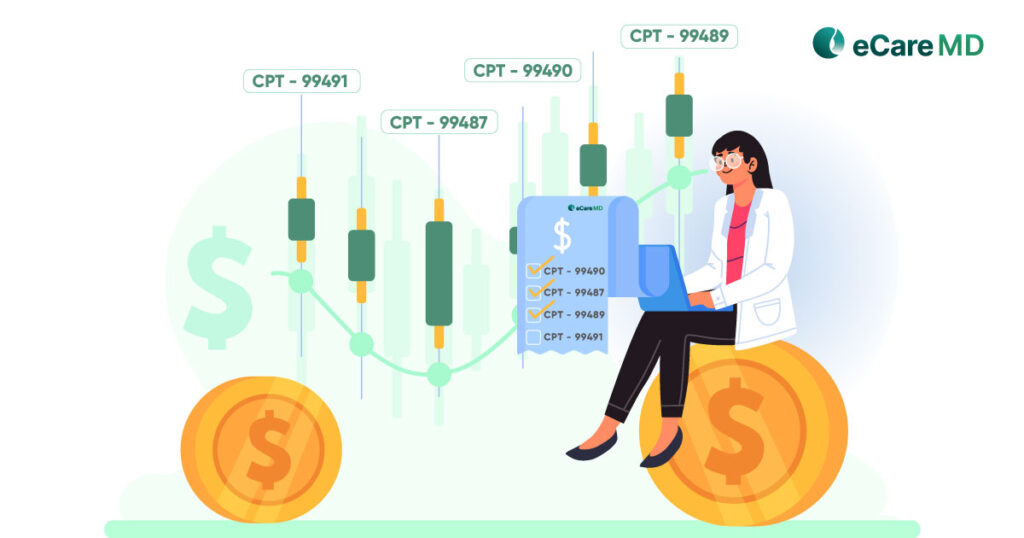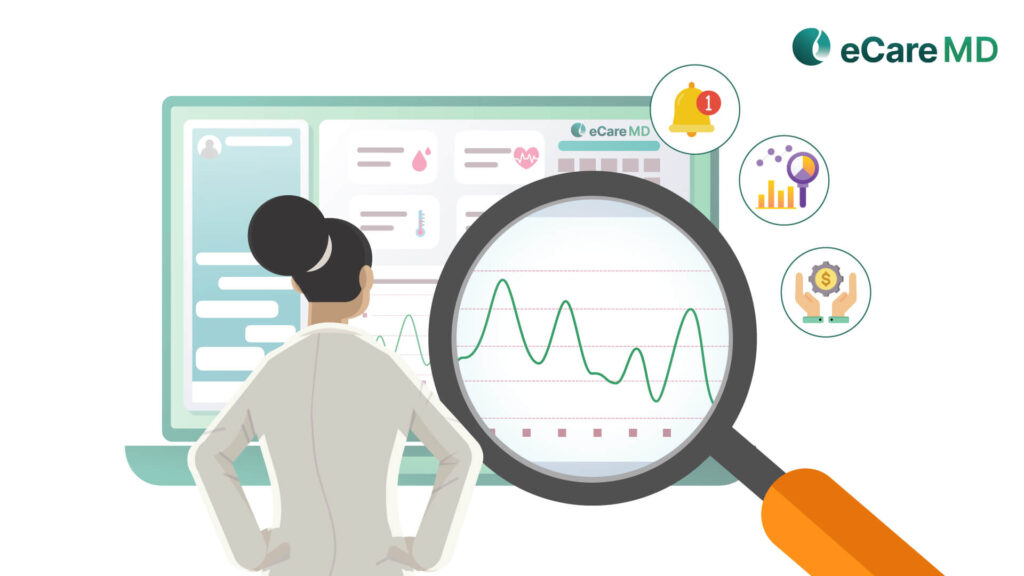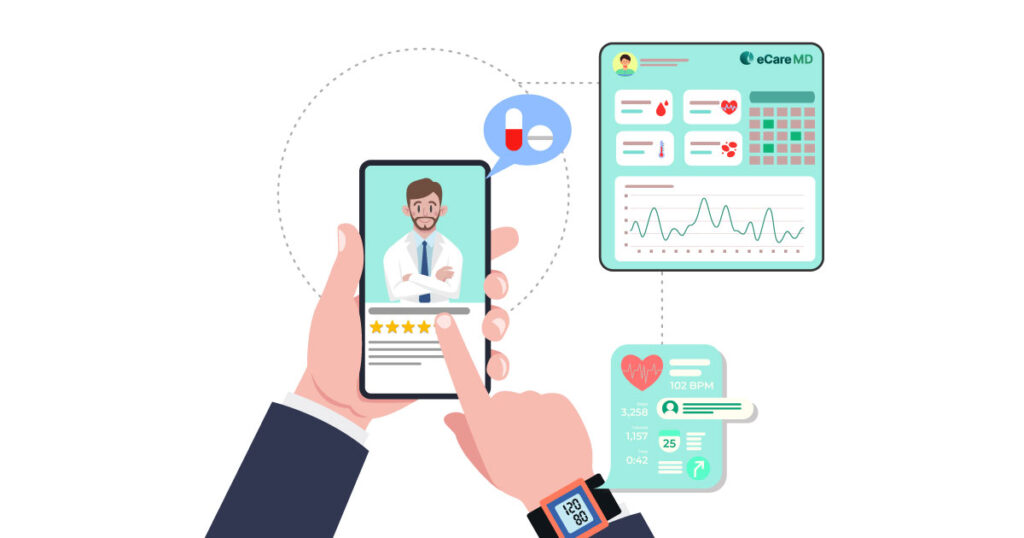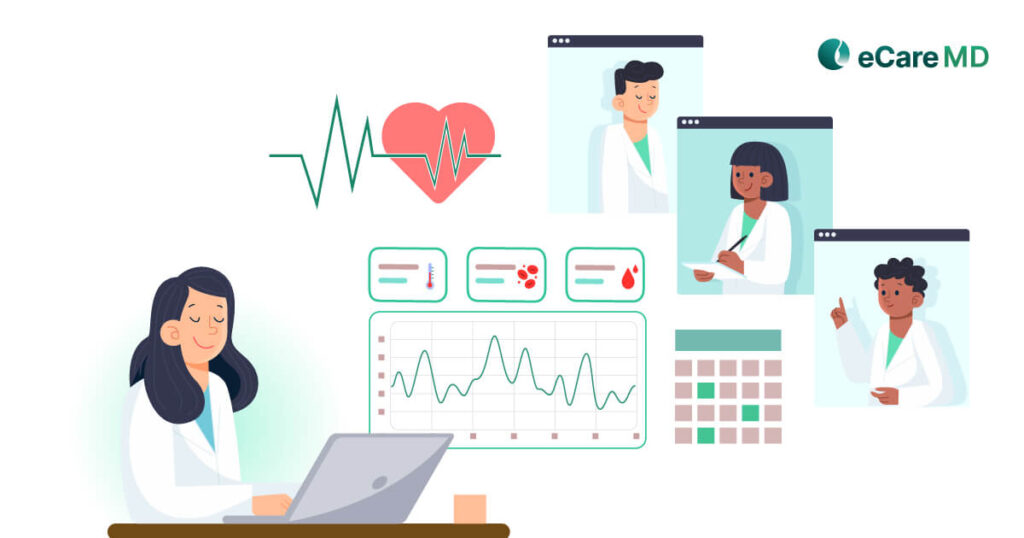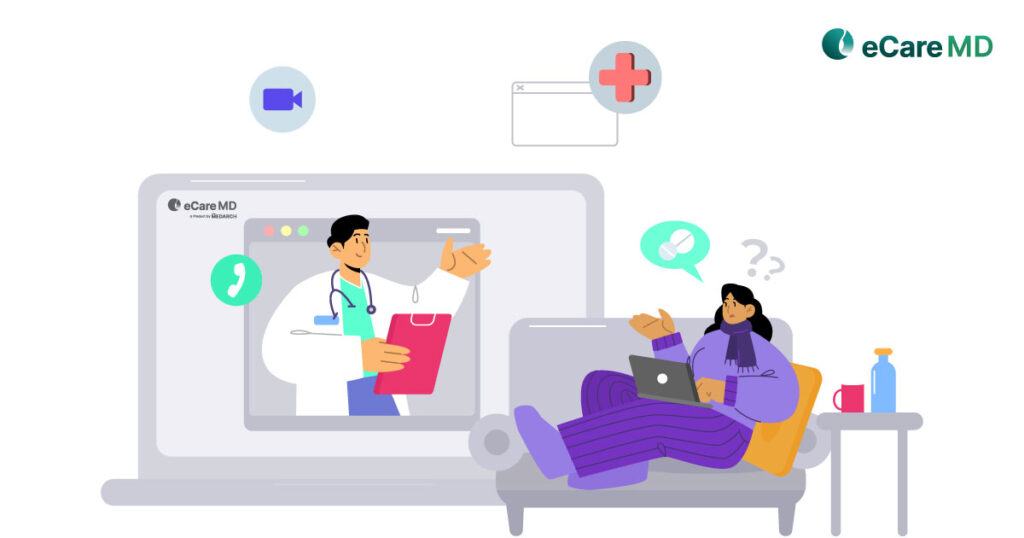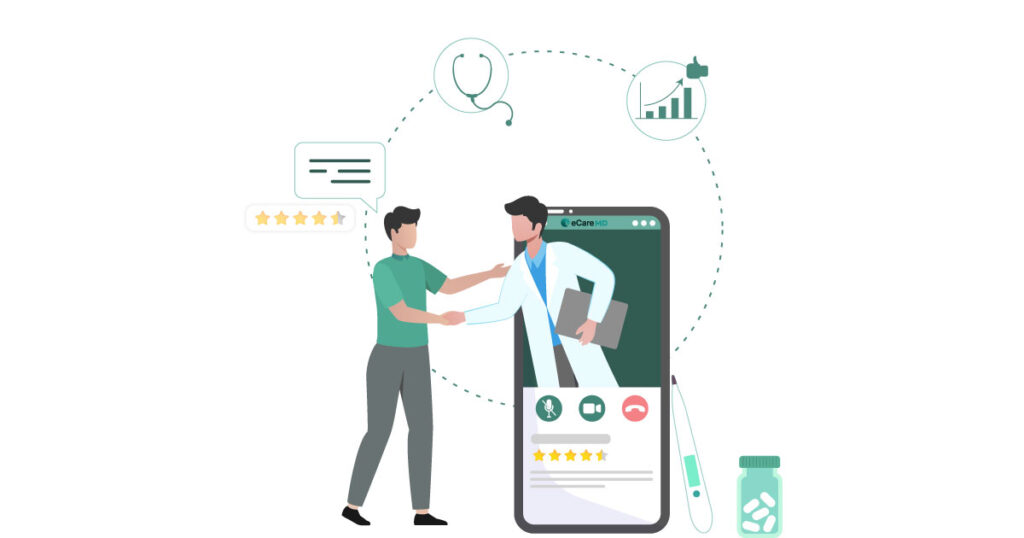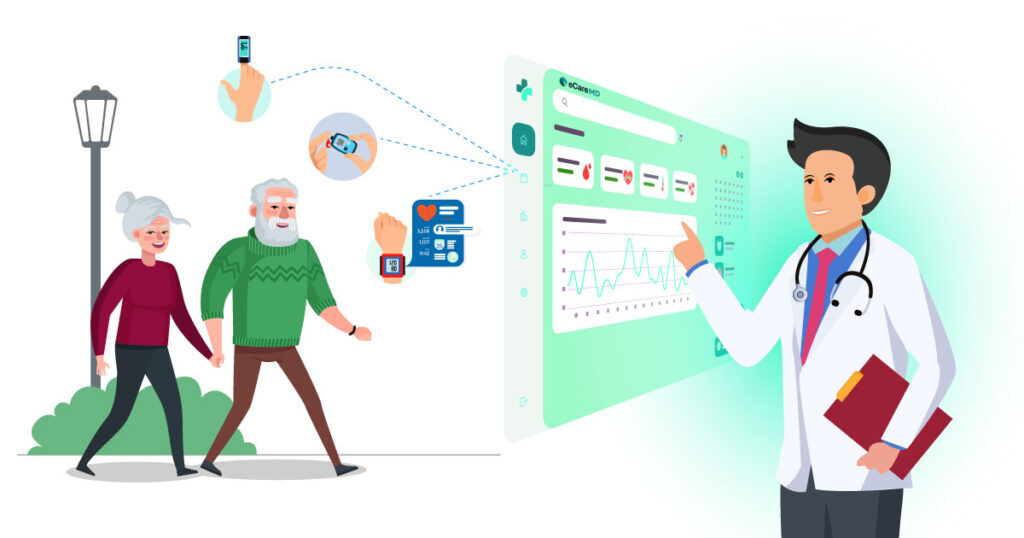By allowing healthcare practices to move from traditional practices to digital practices, remote patient monitoring has instilled a sense of comfort in giving and receiving care. With telehealth integration, patients could connect with providers for consultations; on the other hand, EMR integration providers could efficiently collect data and deliver care without even having to visit the healthcare facility
But this might bring you to the next question, what are the essential features of RPM software that you require?
Well, let’s find out in this blog and let this be your guide to the RPM software features checklist.
Having said that, let’s have a look at the essential features of RPM software that are required for seamless monitoring:
Having a simple, intuitive, interactive, and user-friendly interface can make the software easy to use. One of the best practices for user interface designing is to adopt a patient-first approach that will help in understanding the application better and make the navigation through complex patient data easier.
Some of the crucial aspects to consider when designing RPM software are the development of intuitive, instructive, and customized dashboards for different conditions. Considering these little things is essential to drive patient engagement and make the usability of the application smoother and easier.
There are chances that a few patients might be suffering from two of the same chronic conditions, but your other patients might be suffering from different conditions. This makes data collection and transmission processes more complex. This means the software needs to equip you with customized dashboards specific to patient needs and conditions.
The RPM software should be able to transmit some of the necessary vital signs like heart rate, blood oxygen levels, glucose levels, etc., which acts as a crucial healthcare parameter to provide quick treatment.
Since RPM collects real-time patient data, some customization in this feature can give providers a slight edge in offering better preventive care. By adding the features of automated alerts and notifications whenever the device records data outside the set parameters, doctors can immediately intervene to avoid further complications in patients’ healthcare.
One of the most essential features of RPM software is the ability to collect the data from the RPM devices and store it before transmitting it to the care provider’s system. Various factors here can obstruct the process, making the data prone to data breaches and theft.
Ensure that the RPM software you are choosing is encrypted and there are secure channels for smooth and secure data transmission. Adhering to the guidelines set by HIPAA can be a crucial step in the data protection of patients.
Furthermore, build a robust data storage infrastructure for data protection. New-age technologies like cloud and blockchain can be used to build a robust ecosystem with minimum chances of data breaches. Along with that, ensure that the software vendor covers data recovery in case there are any chances of data loss.
Remember, HIPAA-compliant RPM software is something that you look to ensure the ecosystem is secure for data transmission and storage.
This is important because it equips healthcare providers with essential data to promptly intervene in a patient’s healthcare journey to avoid complications. Customizable notifications with respect to the collected data can amplify the entire care process. Along with the ease it provides in delivering care, it is also one of the most effective patient engagement strategies for RPM programs.
While some of the features are dedicated to enabling seamless monitoring of patients remotely, the remote patient monitoring software should also have features that should allow healthcare providers to communicate. Along with that, the RPM software should also be capable of keeping the patients engaged in their care journey. Let’s see what essential features of RPM software enable this functionality.
are journey to avoid complications. Customizable notifications with respect to the collected data can amplify the entire care process. Along with the ease it provides in delivering care, it is also one of the most effective patient engagement strategies for RPM programs.
There is a fine line difference between telehealth vs remote patient monitoring. Both of them are essential aspects of virtual care where one complements another and vice versa. However, to enable both patients and providers to have remote consultations, the remote patient monitoring software should be integrated with telehealth platforms.
Along with that, make sure that the software supports two-way communication between patients and providers. This way, you give the patient more control of their health, and it is also one of the most effective ways to encourage patients to actively participate in their healthcare journey.
The Centers for Medicare and Medicaid Services (CMS) recognizes patient education as an important aspect of care delivery. Since patients are equally responsible for their care, in RPM, the software should provide them with educational material and resources.
However, it is a little more complex than it seems, as every patient suffers from different conditions, so curating educational material specific to the patient’s condition is important. The patient should have access to educational resources tailored to their specific conditions; this is essential for patient education and engagement.
Along with that, the remote patient monitoring software should also provide interactive tools to encourage patients to self-manage their care and adhere to treatment plans, which will directly result in better healthcare outcomes.
In remote monitoring and care delivery, care team communication and collaboration are what concern most traditional healthcare providers. However, with the feature of secure messaging, the remote patient monitoring software gets the functionality of instant messaging, enabling care team members to communicate and collaborate with one another.
Furthermore, top-rate RPM software vendors develop the software in such a way that automatically informs everyone on the care team about any activity being done for patient care. This way, a streamlined channel of communication is established to share information and coordinate care activities better.
Technology is changing at an unprecedented speed, and as it evolves, your remote patient monitoring software should be able to adapt. Interestingly, including certain features can help you create the base to scale your practice and make it more efficient.
Cloud-based RPM software can literally solve the problem of accessibility and data storage. Moreover, it will also add another layer of security for your crucial patient data. With cloud-based RPM software, you get secure and centralized data storage, which can be accessible from any device with just an internet connection.
Furthermore, it also equips your software with all the essential needs to scale your practice and accommodate the growing needs of the patients as well as your healthcare practice.
Wearable devices for RPM play an important role in remote monitoring as they collect patient data and send it to the provider’s system. However, the same data should also be reflected in the patient’s EMR to maintain transparency and enable the seamless transfer of patient data from RPM software to EHR Systems.
This feature improves the efficiency of your healthcare practice by eliminating the need to duplicate tests and reading while ensuring that the provider gets a complete overview of patient health information.
RPM software revolves around sensitive patient data and converts them into a comprehensive structure for easier understanding of the providers, including statistical models for data visualization and harnessing the power of machine learning (ML) algorithms to derive insightful information from the data collected and transmitted.
The analytics and reporting feature of your RPM software is crucial for identifying the patterns and trends in the patient’s health data. If integrated successfully, it can improve preventive care significantly and even assist healthcare providers in being better prepared for any unprecedented changes in patient health.
The main role of analytics and reporting features in RPM software development is to enhance decision-making and equip healthcare providers to make evidence-based decisions.





























